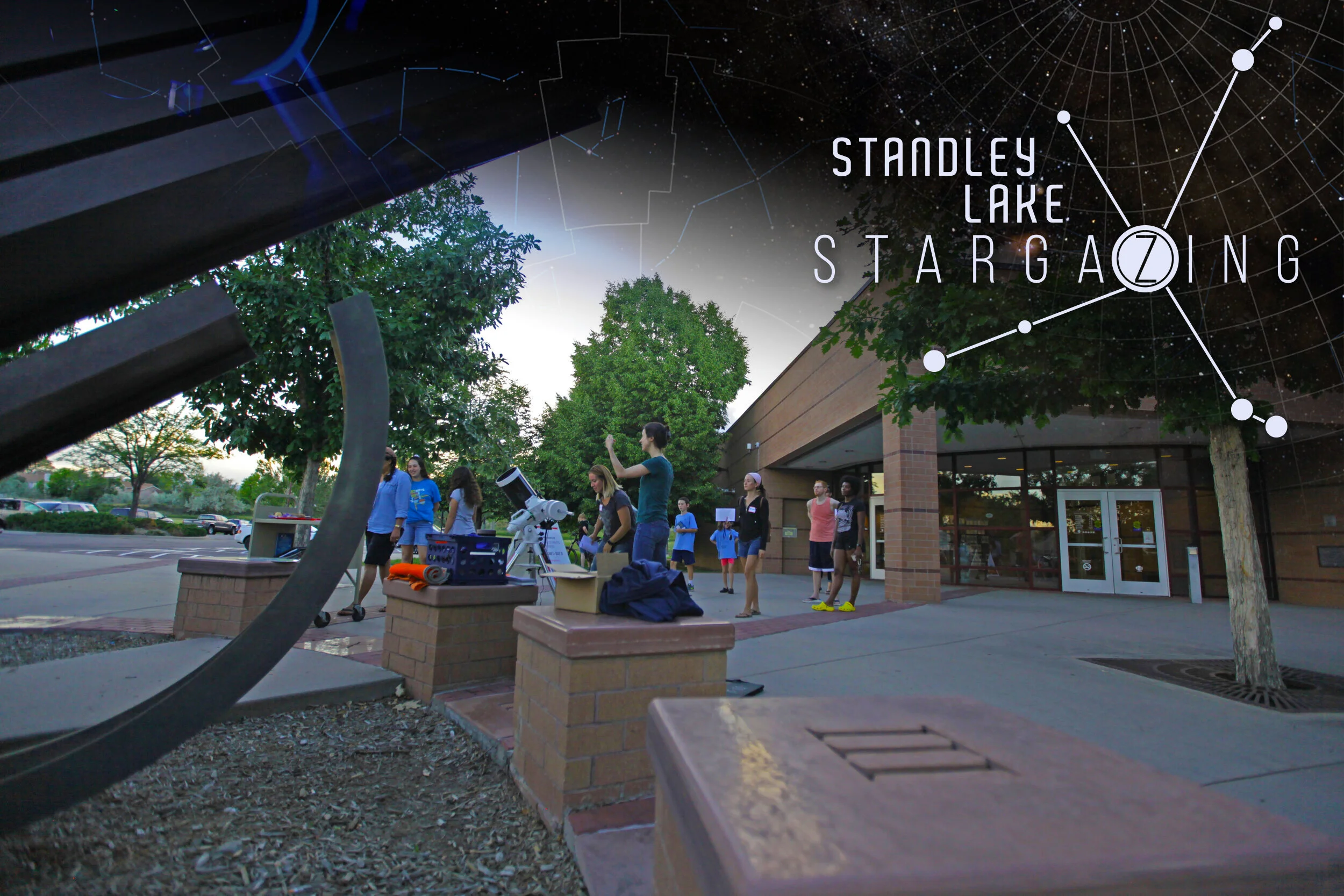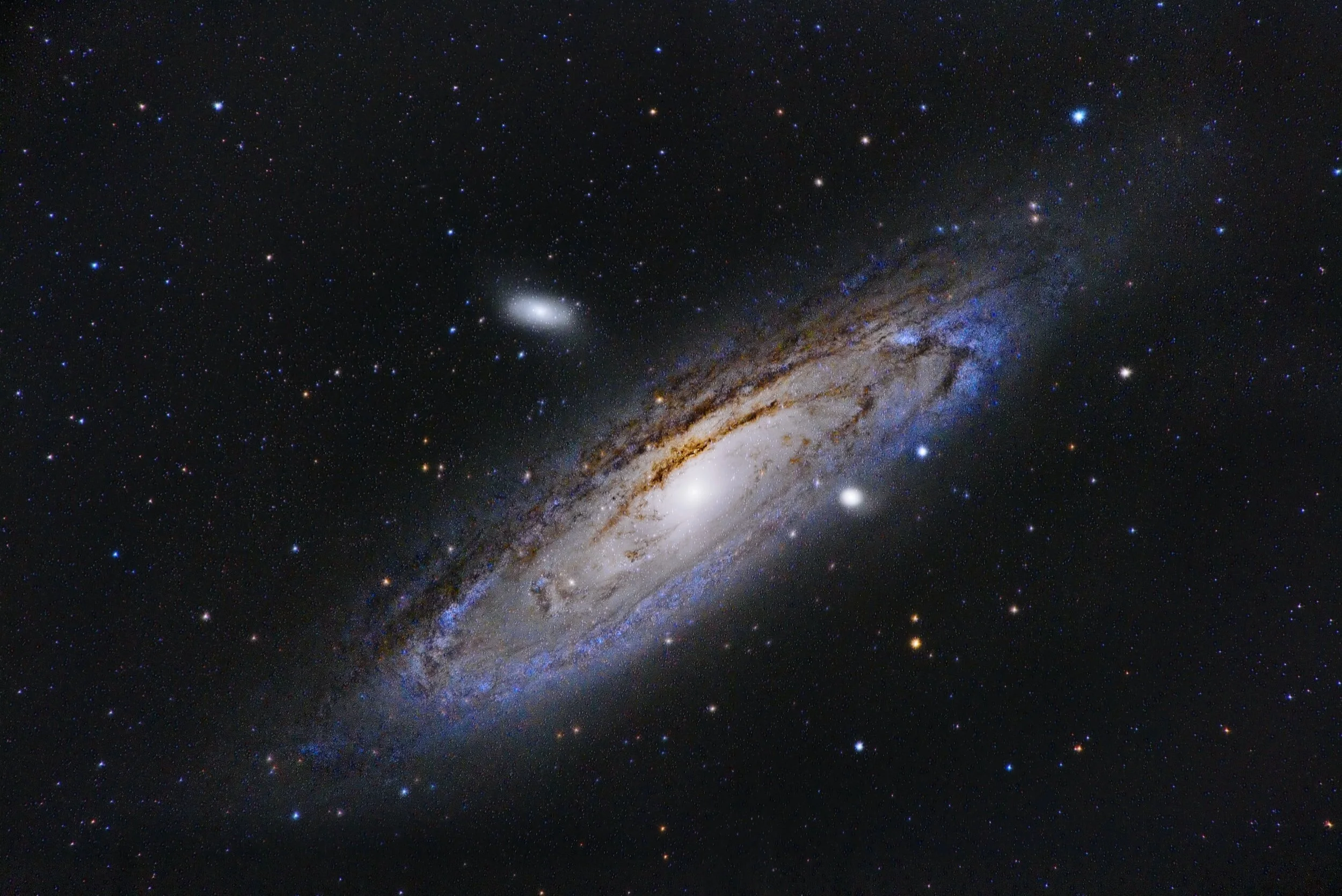With April comes warmer springtime evenings, and a great opportunity to spot one of the most recognizable constellations in the night sky: Leo, the Lion. Leo is not only comprised of fairly bright stars, it also actually resembles a stick-figure lion, unlike many constellations who bear little if any resemblance to their namesake.
Read MoreAsterisms are convenient patterns in the night sky, technically not constellations but usually easily recognizable and very useful for getting your bearings under the sky, such as the Big Dipper or the Winter Hexagon. Learn to find the Spring Triangle tonight!
Read MoreAn easy target for binoculars and small telescopes is the open cluster M41 in Canis Major (The Great Dog), located just south of the bright Sirius. In binoculars it appears like a fuzzy patch, and small to moderate telescopes at low power will resolve it into a diverse and brilliant grouping of stars, some of which are quite faint.
Read MoreA rare treat for visual observers this week: a new nova in Cassiopeia is within reach of amateur telescopes. A nova occurs at the end of a star’s life and are somewhat rare events, especially those that can be glimpsed with backyard equipment. Sky & Telescope’s Bob King explains everything you need to know to catch it while it’s still visible:
Read More‘Interstellar’ offers a rare chance to see the effects if general relativity and time dilation on the big screen, but not all of the film is grounded in solid science. Check out Cinemasins with Dr. Neil deGrasse Tyson for a quick breakdown of the film (also a great summary of the film if you haven’t seen it but want to check out the highlights).
Read MoreAs scientists learn more about the universe, many discoveries seem far stranger than anything we could have imagined. One extremely counterintuitive notion is that time is relative and not absolute, meaning two observers can experience the flow of time differently if they are moving relative to each other. This head scratching phenomenon is just one of the many scientific concepts portrayed accurately in the film Interstellar.
Read MoreA lot is happening in the sky this week! For starters, the Vernal Equinox occurs tomorrow, marking the first official day of Spring. Around this date the night and day are almost exactly 12 hours each (the word ‘equinox’ comes from latin roots meaning roughly ‘equal night’). The Moon moves through Taurus tonight near Mars and the Pleiades, and a host of Messier objects are in the evening sky.
Read MoreTonight the Moon will form a close triangle with Mars and the always distinctive Pleiades cluster. Use this chart to find it this evening.
Read MoreSeeing the rings of Saturn, the craters of the Moon, or even the moons of Jupiter through a telescope is something everyone should experience. Standley Lake Stargazing wants to share the wonders of the night sky with the community.
Read MoreAs we dig out of the blizzard this weekend, it might not feel like it but Spring is just around the corner! And with Spring comes a rich assortment of deep-sky objects - galaxies, nebulae, star clusters - many of which require nothing more than a pair of binoculars to appreciate. The first step to locating many of these amazing targets is getting familiar with the basic constellations to use a reference in locating fainter objects.
Read MoreMarch is one of the deep-sky observer’s favorites, providing the right balance of celestial showpieces, increasingly warmer weather with sufficiently long nights to view galaxies, nebulae, and star clusters spread over the late winter/early spring sky. One of the most famous catalogs of deep-sky objects is that compiled by French astronomer Charles Messier (and friends).
Read MoreWith the Moon prominently placed in the eastern sky, a great way to get familiar with lunar features is NASA’s Moon Trek. This incredible 3D tool lets you explore the surface in great detail and even fly over the surface as imaged by NASA’s lunar orbiters.
Read MoreNASA’s Perseverance Rover successfully landed on Mars 5 days ago. But did you know it’s not alone? There are several orbiters monitoring the mission as well as previous rovers on the surface of Mars. Here’s a 3D interactive model to explore Mars on your own.
Read MorePerseverance successfully landed on Mars! Take advantage of the clear skies in Denver tonight to view Mars just above the Moon using this chart.
Read MoreSave this link to watch the Perseverance rover land on Mars live tomorrow as NASA’s Mars 2020 mission reaches the red planet!
Read MoreThis Thursday when Perseverance descends through the Martian atmosphere, the mission’s success will ride on a complicated series of events that must work perfectly to bring the rover safely to the surface. Here’s an animation of the entire process, letting you see how the skycrane sets the rover down after re-entry!
Read MoreNASA’s Perseverance rover is landing on Mars later this week!
Read MoreWant to see the Polar Vortex from space - in real time? Visit NOAA’s interactive map here
Read MoreStar-hopping is a means of navigating the night sky by recognizing constellations and other patterns as landmarks without relying on coordinates or equipment. This method is one of the best ways to get familiar with the night sky, and you probably already know more than you think you do!
Read MoreWith so many different star charts and field guides, how do you know which one is right for you? Perhaps the best introductory book ever written for aspiring stargazers is ‘Nightwatch’ by Terence Dickinson. Get your copy from local retailer Mile High Astronomy!
Read More



















